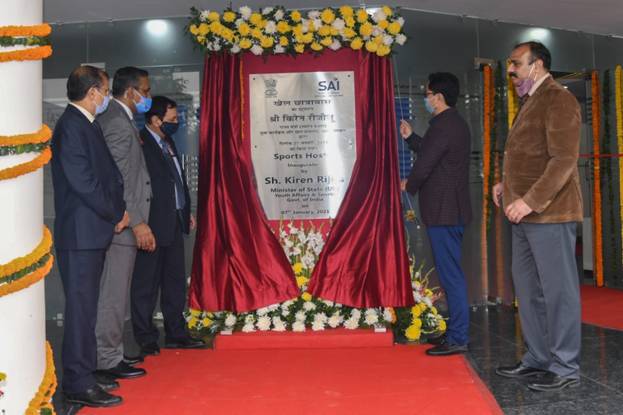Every thing need to know about Silambam the ancient Martial Arts of India.
Silambam is a weapon-based Indian martial art originating in South India in the Indian subcontinent. This style is mentioned in Tamil Sangam literature. The World Silambam Association is the official international body of Silambam.

References in the Silappadikkaram and other works of the Sangam literature show that Silambam has been practiced since at least the 4th century BC.
It derives from the Tamil word silam, meaning hill. The term silambambu referred to a particular type of bamboo from the Kurinjimala (kurinji hills) in present-day Kerala. Thus silambam was named after its primary weapon, the bamboo staff.
It may have earlier used for self-defence and to ward off animals in the Kurinji hills and later evolved into a present-day martial art.
Bamboo staffs – as well as swords, pearls and armour – were in great demand from foreign traders.

The ancient city of Madurai formed as the point of focus of Silambam's spreading. The Silambam staff was acquired by the Egyptians, Greeks and Romans and was spread back to the Middle East, Europe and North Africa.
The Tamil Kingdom which encompassed Southern India and Sri Lanka spread it throughout Southeast Asia.
The Kings Puli Thevar and Dheeran Chinnamalai had armies of Silambam soldiers named "Thadii Pattalam." Veerapandiya Kattabomman, Chinna Maruthu and Periya Maruthu (1760–1799) relied mainly on their Silambam prowess in warfare against the British Army.
Indian martial arts and other related martial arts practices suffered a decline after the British colonists banned Silambam and promoted modern military training, which favoured firearms over traditional weaponry.

The first stages of Silambam practice are meant to provide a foundation for fighting, and also preparatory body conditioning. This includes improving flexibility, agility, and hand-eye coordination, kinesthetic awareness, balance, strength, speed, muscular and cardiovascular stamina.
what are the Weapons used in Silambam Maru,?
Weapon used in Silambam Silambam's main focus is on the bamboo staff. The length of the staff depends on the height of the practitioner. Ideally, it should just touch the forehead about three fingers from the head, typically measuring around 1.68 meters (five and a half feet). Different lengths may be used depending on the situation. For instance, the sedikuchi or 3-foot stick can be easily concealed. Separate practice is needed for staffs of different lengths. Listed below are some of the weapons used in Silambam.
- Silambam: staff, preferably made from bamboo, but sometimes also from teak or Indian rose chestnut wood. The staff is immersed in water and strengthened by beating it on the surface of still or running water. It is often tipped with metal rings to prevent the ends from being damaged.
- Maru: a thrusting weapon made from deer (more accurately, Blackbuck) horns.
- Aruval: sickle, often paired.
- Panthukol: staff with balls of fire, or weighted chains on each end.
- Savuku: whip.
- Vaal: sword, generally curved.
- Kuttu katai: spiked knuckleduster.
- Katti: knife.
- Kattari: native push-dagger with a H-shaped handle. Some are capable of piercing armor. The blade may be straight or wavy.
- Surul kaththi: flexible sword.
- Sedikuchi: cudgel or short stick, often wielded as a pair.
Kuttu Varisai
Kuttu Varisai is the unarmed combat component of Silambam and also a stand-alone martial art. It contains animal forms.
World initiatives of Sailamba martial Arts
Silambam made its first historical appearance in the eyes of the world through the auspices of the committee of the United Nations Assembly, which recommended Silambam Asia for United Nations status.
The inauguration was held at the United Nations Headquarters in New York, United States on 21 January 2019.
However, the China-Taipei government representatives raised questions concerning border conflicts in ancient records pertaining to Silambam.
A request was lodged for the organization of Silambam Asia to resolve with ratification of the raised problems by member states. On 30 January 2019, substantive work was completed and concluded for Silambam Asia with Special Status in the United Nations.
In many M.G.Ramachandran (MGR) films from the 1950s and 1960s, MGR had incorporated silambam fighting scenes to popularize these ancient martial arts in the 20th century. MGR himself was a practitioner of silambam fighting, learning this martial art from Master Madurai Maadakulam Ravi. Some of these movies include Thaikkupin Tharam, Periya Idathu Penn, Mugaraasi and Thanipiravi.
List of films featuring Silambam (from wiki)
| Year | Film | Language(s) | Lead actor(s) / Performer(s) |
|---|---|---|---|
| 1956 | Thaikkupin Tharam | Tamil | M. G. Ramachandran |
| 1962 | Thayai Katha Thanayan | Tamil | M. G. Ramachandran |
| 1963 | Periya Idathu Penn | Tamil | M. G. Ramachandran |
| 1964 | Padagotti | Tamil | M. G. Ramachandran |
| 1966 | Mugaraasi | Tamil | M. G. Ramachandran |
| 1966 | Thanipiravi | Tamil | M. G. Ramachandran |
| 1970 | Maattukara Velan | Tamil | M. G. Ramachandran |
| 1971 | Rickshawkaran | Tamil | M. G. Ramachandran |
| 1976 | Uzhaikkum Karangal | Tamil | M. G. Ramachandran |
| 1978 | Thai Meethu Sathiyam | Tamil | Rajinikanth |
| 1980 | Murattu Kaalai | Tamil | Rajinikanth |
| 1982 | Thooral Ninnu Pochchu | Tamil | K. Bhagyaraj |
| 1983 | Mundhanai Mudichu | Tamil | K. Bhagyaraj |
| 1989 | Karagattakaran | Tamil | Ramarajan |
| 1992 | Thevar Magan | Tamil | Kamal Haasan |
| 1994 | Periya Marudhu | Tamil | Vijayakanth |
| 1995 | Villadhi Villain | Tamil | Sathyaraj |
| 1996 | Amman Kovil Vaasalile | Tamil | Ramarajan |
| 2008 | Silambattam | Tamil | Silambarasan |
| 2010 | Vamsam | Tamil | Kishore |
| 2011 | 7aum Arivu | Tamil | Suriya |
| 2015 | Baahubali: The Beginning | Tamil, Telugu | Prabhas |
| 2018 | Seemaraja | Tamil | Samantha Akkineni |
Note: please Comment Here for UPDATES and CORRECTIONS
Why news media is in crisis & How you can fix it.
India needs free, fair, non-hyphenated and questioning journalism even more as it faces multiple crises. But the news media is in a crisis of its own. There have been brutal layoffs and pay cuts. The best of journalism is shrinking, yielding to the crude prime-time spectacle. My digital news .in has very few young reporters, columnists and editors working for it. Sustaining journalism of this quality needs smart and thinking people like you to pay for it. Whether you live in India or overseas, you can do it here
Donate. https://mydigitalnews.in/donate
NOTE: Please email us for updates and corrections, if you wish to publish articles like this you can send them to info@mydigitalnews.in or mydigitalnews.in@gmail.com or you can Directicle write Articles on our Site by registering https://mydigitalnews.in/register
Disclaimer: Mydigitalnews.in provides the content from various information sources ‘as is and the content to be used only for informational purposes and not responsible for the inaccuracy or deficiency of the provided information. Mydigitalnews. in have the right, at its sole discretion, to make modifications in any aspect of the provided information.
Mydigitalnews. in Internet site may contain links to other Internet sites. While we try to link only to sites that share our high standards and respect for privacy, we are not responsible for the content or the privacy practices employed by other sites.
What's Your Reaction?











































































